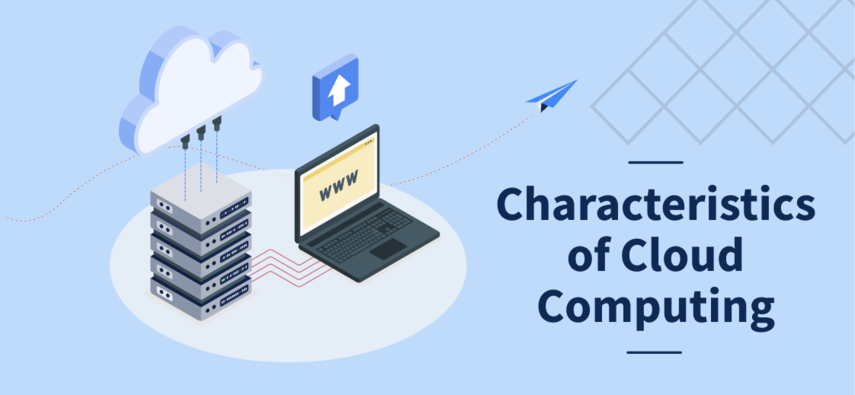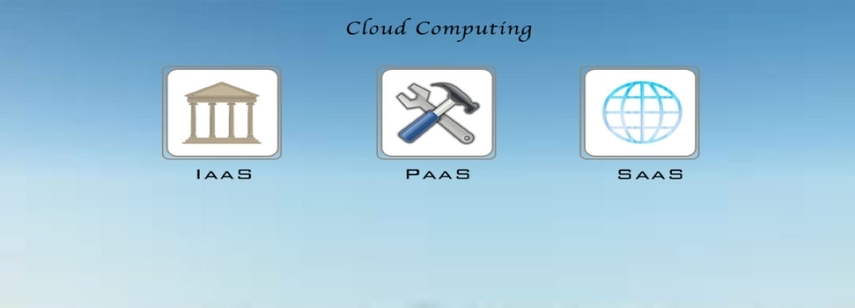
Cloud Computing is the delivery of computing services such as servers, data storage, databases, networking, software, analytics, and intelligence over the internet (“cloud”) to offer flexible resources, faster innovation, and economies of scale. To put it another way, rather than investing in their own data centres, businesses may rent access to another party's infrastructure, such as storage, processing servers, and databases, from a cloud computing service provider and only pay for the resources they actually use.
Your operational expenses may be reduced, infrastructure can be operated more effectively, and applications can be scaled to meet business requirements by only paying for the cloud services you really use.
Cloud Computing gives an alternative to the on-premises data center. With an on-premises data center, we have to manage everything, such as acquiring and installing hardware, virtualization, installing the operating system, and any other essential software, setting up the network, establishing the firewall, and setting up storage for data. We are now in charge of sustaining it throughout its whole existence after setting everything up.
However, if we pick cloud computing, a cloud provider is in charge of the hardware's acquisition and upkeep. Additionally, they provide a huge selection of software and platform as a service. Any necessary services might be rented out by us.The user may manage the compute, storage, network, and application resources with ease thanks to the cloud environment's conveniently accessible online interface.
Who Uses Cloud Computing?

Building customer-facing online apps, data backup, delivering email/SMS notifications, virtual desktops, software development and testing, big data analytics, and disaster recovery are just a few of the many use cases that organizations of all shapes, sizes, and sectors are adopting the cloud for. As an illustration, telecom firms use cloud services to communicate with their clients by transmitting various kinds of messages. Companies that provide financial services are utilizing the cloud to provide real-time fraud prevention and detection.
Characteristics of Cloud Computing

On Demand Self Service
The usage of web services and resources is made possible by cloud computing. A website may be accessed at any time and used by anybody.
Broad Network Access
Since cloud computing is completely web based, it can be accessed from anywhere and at any time.
Resource Pooling
Cloud computing allows multiple tenants to share a pool of resources. One can share a single physical instance of hardware, database and basic infrastructure.
Rapid Elasticity
The resources can be scaled either horizontally or vertically at any moment. The capacity of resources to scale up or down in response to demand is known as resource scaling. The resources that clients are using at any one time are automatically tracked.
The resources that clients are using at any one time are automatically tracked.
Measured Service
In this service cloud provider controls and monitors all the aspects of cloud service. Resource optimization, billing, and capacity planning etc. are depend on it.
How Does Cloud Computing Work?
Let's break down cloud computing into its front end and back end to better understand how it functions. The client's computer or computer network makes up the front end. The client's computer or computer network makes up the front end. The cloud's back end is made up of multiple computers, servers, and data storage platforms. They are linked through a network, most frequently the Internet. The user's or client's side of the computer is called the front end. The system's "the cloud" portion serves as the back end.
Cloud Computing Deployment Models

The deployment models specify different types of clouds. Every organization has different needs, they need to determine which cloud deployment model will work for them. There are mainly three cloud deployment models:
1. Public Cloud
The public cloud is a collection of hardware, networking, storage, services, applications, and interfaces that are owned and run by a third party and made available to other businesses or people. A web browser is used to log into these services and manage your account. These commercial service providers construct a highly scalable data centre and conceal from the customer the specifics of the underlying architecture.
2. Private Cloud
A private cloud is a collection of hardware, networking, storage, services, applications, and interfaces that are owned and run by a company and available to its partners, customers, and workers alone. A private cloud can be built and maintained by a third party for a single company's exclusive use. The private cloud is a tightly regulated setting that is off limits to the general public. In essence, it is merely another method of managing an on-site data centre.
3. Hybrid Cloud
A hybrid cloud is made up of both a private cloud and the usage of public cloud services, and it combines the two to address business issues. A hybrid cloud allows your company better flexibility, more deployment options, and helps to optimise your current infrastructure, security, and compliance by enabling data and applications to flow between private and public clouds.
The goal is to create a hybrid cloud environment that can integrate services and data from several cloud models in order to give a uniform, automated, and well-managed computing environment.
Types of Cloud Services

-
Infrastructure as a Service (IaaS):
In IaaS, we may lease IT infrastructure from a cloud service provider, including servers, virtual machines (VMs), storage, networks, and operating systems. Any software we desire may be installed on a virtual machine running Linux or Windows. We don't have to worry about the virtualization software or the hardware while using IaaS, but we do have to handle everything else. Although IaaS gives us the most freedom, upkeep still requires more work.
-
Platform as a Service (PaaS):
This service offers a flexible setting for creating, testing, distributing, and maintaining software applications. The PaaS vendor offers the capacity to deploy and run the programme, while the developer is in charge of creating it. The freedom is decreased while using PaaS, but the environment is managed by the cloud suppliers.
-
Software as a Service (SaaS):
It offers the end consumers a centrally hosted and managed software solution. It provides on-demand, subscription-based software delivery through the internet. For instance, Office 365, Dropbox, WordPress, Microsoft One Drive, and Amazon Kindle. SaaS is utilized to reduce operating costs as much as possible.
Cloud Computing Examples and Use Cases
If you use an online service to send email, edit documents, watch movies or TV (like Netflix), listen to music, play games, or store pictures and other files, it is likely that you are part of cloud ecosystem, as Cloud Computing is making it all possible behind the scenes. There are many use cases of Cloud Computing, few are mentioned below:
1. Test and Development
Cloud services are used by IT companies as a development environment for applications. The environments for development, testing, and production may be swiftly created by DevOps teams. Physical and virtual computers are provisioned automatically as part of this.
2. Big Data Analytics
There is a massive amount of data collected each day from cloud applications, IoT devices and the users who interact with them. Cloud Computing allows organizations to leverage the computing power of Cloud Computing.
3. Cloud Storage
Files may be automatically saved to the cloud using cloud data storage, where they can subsequently be viewed, stored, and retrieved from any device with an internet connection. Organizations can only pay for the cloud storage they use instead of establishing data centres for storage, relieving them of the responsibility of managing the ongoing upkeep of the storage infrastructure.
In conclusion, cloud computing is a relatively young technical innovation with enormous potential for global effect. It offers its consumers and companies a wide range of advantages.

For instance, one of the advantages it offers to organisations is that it lowers operational costs by focusing more on the business itself and paying less on upkeep and software upgrades. However, there are still more difficulties that cloud computing must face. People have a lot of doubts about how safe and private their data is. Worldwide norms or laws do not apply to data delivered via cloud computing. Despite being one of the most technologically advanced countries, the US lacks data protection rules compared to Europe.Users also worry about who can disclose their data and have ownership of their data. But once there are standards and regulations worldwide, cloud computing will revolutionize the future.